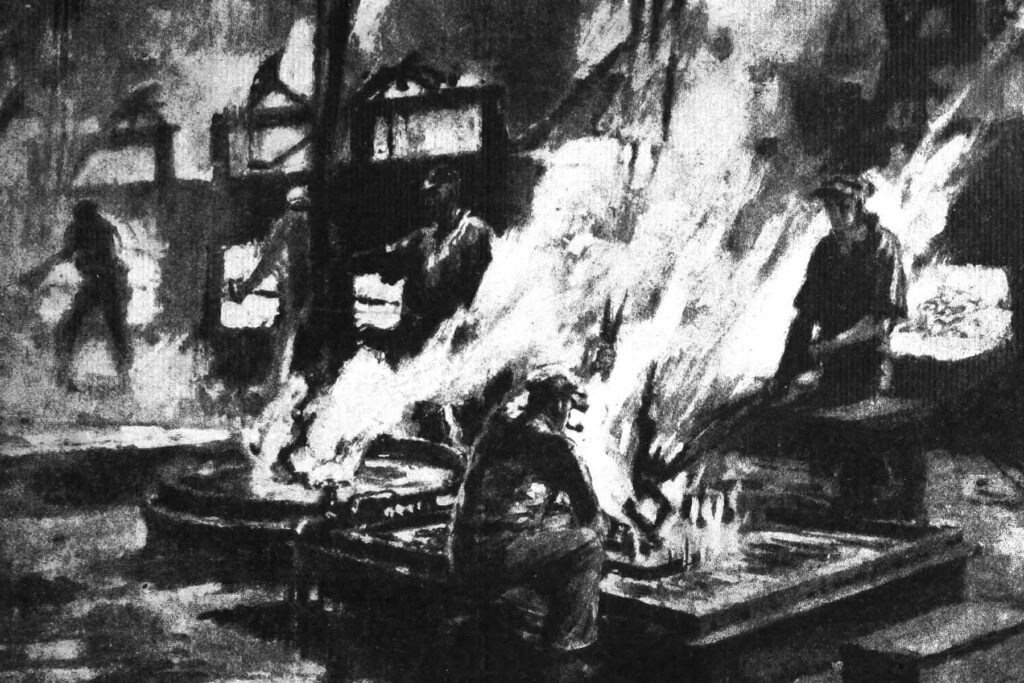How Axes Are Made (1882)
First published in:
Hardware – March 26, 1882

The first step in the operation of making an axe is the formation of the axe head without the blade. The glowing flat iron bars are withdrawn from the furnace and are taken to a powerful and somewhat complicated machine, which performs upon them four distinct operations — shaping the metal to form the upper and lower part of the axe, then the eye, and finally doubling the piece over so that the whole can be welded together.
A workman stands by, seizing the partially-fashioned pieces, one after another, with a pair of tongs, and hammering the lower edges together. Next the iron is put in a powerful natural-gas furnace and heated to a white heat. Taken out, it goes under a tilt hammer and is welded together in a second. This done, one blow from the “drop,” and the pole of the axe is completely and firmly welded.
When the axe leaves the drop, there is some superfluous metal still adhering to the edges and forming what is technically known as a “fin.” To get rid of this fin the axe is again heated in a furnace, and then taken in hand by a sawyer, who trims the ends and edges. The operator has a glass in front of him to protect his eyes from the sparks which fly off as the hot metal is pressed against the rapidly revolving caw. The iron part of the axe is now complete.
The steel of the blade, after being heated, is cut by machinery and shaped with a die. It is then ready for welding. A groove is cut in the edge of the iron, the steel for the blade inserted, and the whole firmly welded by machine hammers. Next comes the operation of tempering. The steel portion of the axe is heated by being inserted in pots of molten lead, the blade only being immersed. It is then cooled by dipping in water, and goes to the hands of the inspector.
An axe is subject to rigid tests before it is pronounced perfect. The steel must be of the required temper, the weight of all axes of the same sizes must be uniform, all must be ground alike, and in various other ways conform to an established standard. The inspector who tests the quality of the steel does so by hammering the blade and striking the edge to ascertain whether it be too brittle or not. An axe that breaks during the process is thrown aside to be made over.
Before the material of an axe is in the proper shape, it has been heated five times, including the tempering process, and the axe, when completed, has passed through the hands of about forty workmen, each of whom has done something toward perfecting it. After passing inspection, the axes go to the grinding department, and from that to the polishers, who finish them upon emery wheels. — Manufacturer and Builder.
Sources
Thomas Fischer Rare Book Library, University of Toronto
1. Hardware: Vol. 4, No. 13 – March 26, 1882
2. Hardware & Metal: Vol.XXXIII, No. 3 – January 15, 1921
